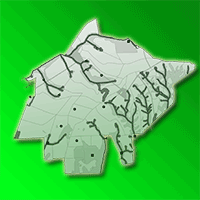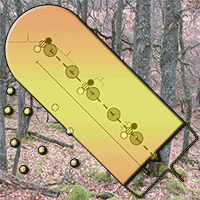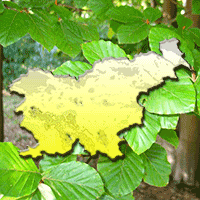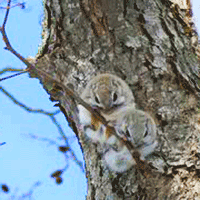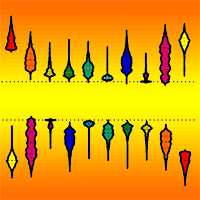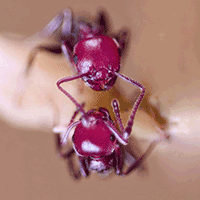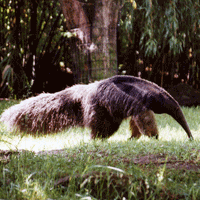
Effect of the plantation age on the use of Eucalyptus stands by medium to large-sized wild mammals in south-eastern Brazil
Thiago PC Timo (1) , Maria Carolina Lyra-Jorge (2), Carla Gheler-Costa (3), Luciano M Verdade (4)
iForest - Biogeosciences and Forestry, Volume 8, Issue 2, Pages 108-113 (2015)
doi: https://doi.org/10.3832/ifor1237-008
Published: Jul 21, 2014 - Copyright © 2015 SISEF
Research Articles
Abstract
In São Paulo State, in Southeastern Brazil, the Eucalyptus plantations have been replacing large areas which were formerly occupied by pastures used for livestock production. Such land use change may affect the habitat use by wildlife in these anthropic landscapes. In this region, the commercial Eucalyptus plantations of the paper and cellulose industry usually take from 6 to 7 years to be harvested. During its production cycle, the Eucalyptus stands vary from an open savanna-like environment just after plantation, when plants still resemble bushes, to a forest-like environment with densely distributed 18-meter high trees. Previous studies show that the Eucalyptus plantations in Southeastern Brazil are used by generalist species including medium and large sized mammals. However, the possible influence of such dramatic temporal environmental heterogeneity on the wildlife habitat use in Eucalyptus plantations is still unknown. In this study, which follows a classic stratified design, we evaluate the influence of the Eucalyptus stand age on the local patterns of distribution and abundance of middle to large-sized wild mammals. Our results show an increase not only in their species richness, but also in their frequency of occurrences along the commercial cycle of the Eucalyptus plantations with a steep decline in both before harvest. This pattern may be related to weed control practices which significantly reduce the understory vegetation, in especial at the end of the commercial cycle while preparing for harvest. Future studies should prioritize the possible variation on the trophic structure in the Eucalyptus plantations along commercial cycles as a response of wildlife friendly silvicultural/agricultural management practices.
Keywords
Forestry, Silvicultural Landscapes, Anthropic Environments, Wildlife, Temporal Heterogeneity
Authors’ Info
Authors’ address
Universidade Federal de São Carlos - UFSCar (Brazil)
Universidade de Santo Amaro - UNISA (Brazil)
Universidade Sagrado Coração - USC (Brazil)
Laboratorio de Ecologia Isotópica - CENA, Universidade de São Paulo, Caixa Postal 96, Piracicaba, SP 13416-000 (Brazil)
Corresponding author
Paper Info
Citation
Timo TPC, Lyra-Jorge MC, Gheler-Costa C, Verdade LM (2015). Effect of the plantation age on the use of Eucalyptus stands by medium to large-sized wild mammals in south-eastern Brazil. iForest 8: 108-113. - doi: 10.3832/ifor1237-008
Academic Editor
Gianfranco Minotta
Paper history
Received: Jan 06, 2014
Accepted: May 05, 2014
First online: Jul 21, 2014
Publication Date: Apr 01, 2015
Publication Time: 2.57 months
Copyright Information
© SISEF - The Italian Society of Silviculture and Forest Ecology 2015
Open Access
This article is distributed under the terms of the Creative Commons Attribution-Non Commercial 4.0 International (https://creativecommons.org/licenses/by-nc/4.0/), which permits unrestricted use, distribution, and reproduction in any medium, provided you give appropriate credit to the original author(s) and the source, provide a link to the Creative Commons license, and indicate if changes were made.
Web Metrics
Breakdown by View Type
Article Usage
Total Article Views: 57586
(from publication date up to now)
Breakdown by View Type
HTML Page Views: 46902
Abstract Page Views: 4566
PDF Downloads: 4519
Citation/Reference Downloads: 77
XML Downloads: 1522
Web Metrics
Days since publication: 4183
Overall contacts: 57586
Avg. contacts per week: 96.37
Citation Metrics
Article Citations
Article citations are based on data periodically collected from the Clarivate Web of Science web site
(last update: Mar 2025)
Total number of cites (since 2015): 41
Average cites per year: 3.73
Publication Metrics
by Dimensions ©
Articles citing this article
List of the papers citing this article based on CrossRef Cited-by.
References
Anuário estatístico ABRAF 2013 ano base 2012 [Statistical Annuary ABRAF 2013 base year 2012]. ABRAF, Brasília, Brazil, pp. 148. [in Portuguese]
Gscholar
Mamíferos de médio e grande porte e sua relação com o mosaico de habitats na cuesta de Botucatu, Estado de São Paulo, Brasil [Medium and large sized mammalians and their relation to habitat patches at the Botucatu cuesta, state of São Paulo, Brazil]. Iheringia. Série Zoologia 102: 150-158. [in Portuguese]
CrossRef | Gscholar
Food habitats and home range of the common long-nosed armadillo Dasypus novemcinctus in Alabama. In: “The evolution and ecology of armadillos, sloths and vermilinguas” (Montgomery GG ed). Smithsonian Institution Press, Washington, USA, pp. 419-427.
Gscholar
Levantamento da mastofauna terrestre de médio e grande porte em remanescente de floresta neotropical - Itatinga, SP [Terrestrial medium to large-sized mammal fauna assessment in a neotropical forest fragment - Itatinga, SP]. Graduation Monography, Instituto de Biociências de Botucatu, Universidade Estadual Paulista “Júlio de Mesquita Filho”, Botucatu, SP, Brazil, pp. 18. [in Portuguese]
Gscholar
Diversidade de mamíferos de médio e grande porte em relação à paisagem da bacia do rio Passa-Cinco, São Paulo [Diversity of medium and large-sized mammals in relation to the landscape atributes in the Passa-Cinco river basin, São Paulo]. Master Degree Dissertation, Universidade de São Paulo, Piracicaba, SP, Brazil, pp. 116. [in Portuguese]
Gscholar
Medium to large-sized mammals in agricultural landscapes of South-Eastern Brazil. Mammalia 75: 345.
Gscholar
Mammals of the neotropics, vol. 3: Ecuador, Bolivia, Brazil. University of Chicago Press, IL, USA, pp. 624.
Gscholar
Quantitative forecasting methods. PWS Publishers, Boston, MS, USA, pp. 656.
Gscholar
Lista anotada dos mamíferos do Brasil [Annotated checklist of Brazilian mammals]. Conservation International, Washington, USA, pp. 38. [in Portuguese]
Gscholar
Photographic sampling of elusive mammals in tropical forests. In: “Sampling rare or elusive species: Concepts, designs, and techniques for estimating population parameters” (Thompson WL, Burnham KP eds). Island Press, Washington, DC, USA, pp. 229-247.
Gscholar
Remote cameras. In: “Noninvasive survey methods for carnivores” (Long RA, MacKay P, Ray J, Zielinski W eds). Island Press, Washington, DC, USA, pp. 110-140.
Gscholar
Inventário florestal das áreas reflorestadas no Estado de São Paulo [Forest inventory of reforested areas in State of São Paulo]. Secreteraia do Meio Ambiente, Instituto Florestal, São Paulo, Brazil, pp. 184. [in Portuguese]
Gscholar
Robust test for equality of variances. In: “Contributions to probability and statistics: Essays in honor of Harold Hotelling” (Olkin I ed). Stanford University Press, Stanford, CA, USA, pp. 278-292.
Gscholar
Analysis of means - a graphical procedure. Industrial Quality Control 24: 101-109.
Gscholar
Levantamento rápido de mamíferos terrestres de médio e grande porte [Rapid assessment of medium to large-sized terrestrial mammals]. In: “Métodos de estudos em biologia da conservação e manejo da vida silvestre” (Cullen L Jr, Rudran R, Valladares-Padua C eds). UFPR, Fundação O Boticário de Proteção à Natureza, Curitiba, Brazil, pp. 181-201. [in Portuguese]
Gscholar
Distribuição e abund’ncia de aves em relação ao uso da terra na bacia do rio Passa-Cinco, Estado de São Paulo, Brasil [Distribution and abundance of birds in relation to land use in Passa-Cinco river basin, state of São Paulo, Brazil]. PhD Thesis, Universidade de São Paulo, Piracicaba, SP, Brazil, pp. 131. [in Portuguese]
Gscholar
Impacto das capinas mec’nica e química do sub-bosque de Eucalyptus grandis sobre a comunidade de formigas (Hymenoptera: Formicidae) [Impact of mechanical and chemical weedings of Eucalyptus grandis undergrowth on an ant community (Hymenoptera: Formicidae)]. Revista Árvore 28: 139-146. [in Portuguese]
Gscholar
Track stations. In: “Noninvasive survey methods for carnivores” (Long RA, MacKay P, Ray J, Zielinski W eds). Island Press, Washington, DC, USA, pp. 75-109.
Gscholar
Mamíferos de médio e grande porte em florestas de Eucaliptus spp. com diferentes densidades de sub-bosque no município de Itatinga, sp. [Medium and large-sized mammals in forests of Eucalyptus spp. with different densities of understories in Itatinga, state of São Paulo, Brazil]. Master Degree Dissertation, Ciências Florestais, USP, Piracicaba, SP, Brazil, pp. 75. [in Portuguese]
Gscholar
Eucalypt plantations. In: Proceedings of the Symposium “On the Variety, Types and Significance of Planted Forests - Technical and Social Considerations for Planted Forests”. Portland (Oregon, USA) Jun 28 - Jul 1 1995. Kluwer Academic Publisher, Portland, OR, USA, pp. 37-52.
Gscholar
Phytogeographical system. In: “Manual técnico da vegetação brasileira” (Secretaria de Planejamento OeC, Fundação Instituto Brasileiro de Geografia e Estatística, IBGE, Diretoria de Geociências, Departamento de Recursos Naturais e Estudos Ambientais eds). IBGE, Rio de Janeiro, Brazil, pp. 9-38. [in Portuguese]
Gscholar
Adaptation of mesocarnivores (mammalia: Carnivora) to agricultural landscapes in Mediterranean Europe and Southeastern Brazil: a trophic perspective. In: “Middle-sized carnivores in agricultural landscapes” (Rosalino LM, Gheler-Costa C eds). Nova Science Publishers, New York, USA, pp. 1-38.
Gscholar
Mammalian sign. In: “Measuring and monitoring biogical diversity: Standard methods for mammals” (Wilson DE, Cole FR, Nichols JD, Rudran R, Foster MS eds). Smithsonian Institution, Washington, DC, USA, pp. 157-176.
Gscholar
Mammal species of the world: a taxonomic and geographic reference. Johns Hopkins University Press, Baltimore, MD, USA, vol. 2, pp. 2142.
Gscholar

